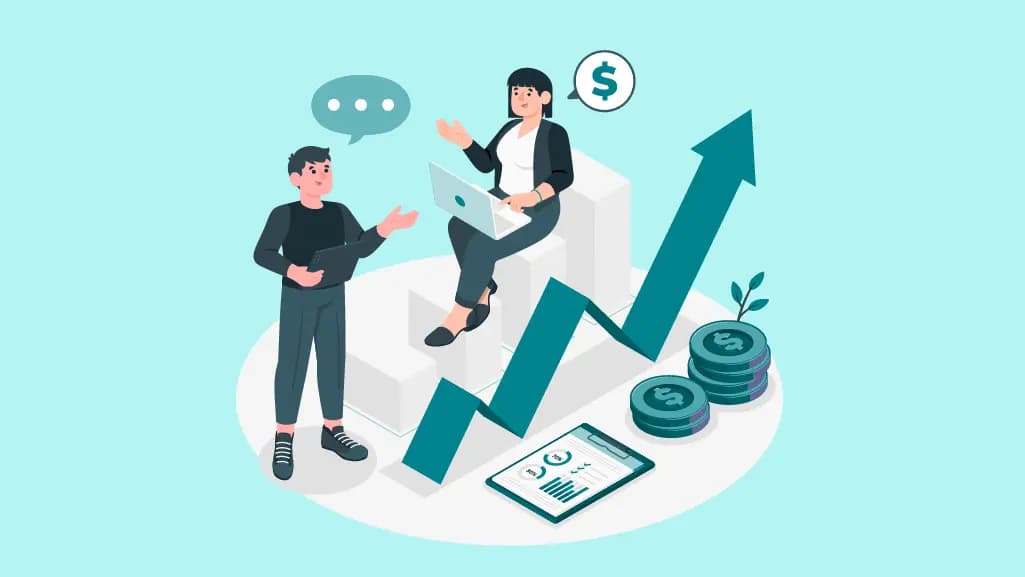
Let’s settle the workplace debate: Are employee engagement and motivation similar?
Spoiler alert: Employee engagement and employee motivation are two different concepts.
But they do go hand in hand, and getting them right is the secret sauce to a thriving team.
Think of motivation as that morning cup of coffee; it gives you an instant lift. Engagement is more like a great work culture; it keeps you wanting to come back for more. Both are important, but they do different jobs.
In this blog, we’ll discuss the difference between employee engagement and motivation, how they influence each other, and, most importantly, how to use both to build a workplace where people want to stay. Let’s get into it!
What is Employee Engagement?
Employee engagement isn’t just about showing up to work. It’s about caring about the job and the company and doing your best. When people care, they don’t just work because they have to; they do it because they want to.
Engaged employees don’t just do their jobs; they bring energy, ideas, and passion. They believe in the company’s mission, take ownership of what they are doing, and genuinely feel connected to their work.
It’s the difference between working for a paycheck and working with purpose. And when engagement is high, workplaces become more productive, innovative, and just a better place.
Understanding the Core of Employee Engagement
Employee engagement is more than just happiness at work; it means genuinely feeling connected to what you are doing and the company you do it for. Here’s what drives real engagement:
- Emotional Investment: Engaged employees don't just come to work; they care about their work. They are emotionally invested in their job, take pride in their work, and want the company to do well.
- Proactive Involvement: They do more than just their job. They find ways to help, share ideas, solve problems, and step up when needed.
- Alignment with Organizational Goals: They don't just finish tasks—they understand how their work helps the company grow. They feel genuinely engaged when their personal goals match the company's goals.
Examples of Behaviors Displayed by Engaged Employees
Engaged employees don’t just do their jobs; they take ownership, show passion, and go the extra mile. Here’s what that looks like:
- Taking the Lead on Projects: They don't wait to be told what to do. If they see a way to improve things, they take the lead and fix it.
- Giving Honest Feedback: They genuinely care about a company's success and speak up. Whether it's process refinement or improving team collaboration, they never hesitate to air their insight toward better outcomes.
- Mentoring & Supporting Peers: They don't just focus on their development; they help others grow, too. From guiding a new hire to sharing advice with a colleague, they contribute to a collaborative, thriving workplace.
Common Factors Influencing Engagement
- Inspired Leadership: Great leaders don't just manage; they inspire, direct, and empower their teams—employees who feel supported and listened to are far more likely to be engaged and deliver their best.
- A positive work environment: It should be a place that feels safe, inclusive, and supportive—engagement will happen on its own. Open communication, trust, and respect form the atmosphere for employees to feel comfortable sharing ideas and taking initiative.
- Recognition That Matters: Everyone wants to feel valued. Whether it’s a simple 'thank you,' or a well-earned reward., appreciating employees keeps them engaged, motivated, and committed to their work.
What is Employee Motivation?
Employee motivation is that spark that keeps people excited, focused, and ready to give their best shot at work. It makes them achieve goals, share ideas, and be productive.
Personal fulfillment drives some employees, and others are driven by recognition or rewards. The key lies in understanding what fires your team—to build a workplace where motivation and engagement go hand in hand.
Types of Motivation
- Intrinsic Motivation: It comes from within—the satisfaction of a job well done, the delight in learning, or the pride in contributing something meaningful. For such employees, intrinsic motivation leads to fulfillment and reward in the work itself.
- Extrinsic Motivation: This comes with external rewards like bonuses, promotions, or public recognition. It works well as a motivator, although it will work even better with intrinsic motivation—to keep employees inspired and rewarded.
Role of Motivation in Achieving Individual and Organizational Goals
For Individuals
- Personal Development: Driven workers like challenges and learning because they view development as a necessary component of their path.
- Job satisfaction is increased when employees feel appreciated and have a sense of purpose in their job, which is made possible by motivation.
- Career Advancement: Driven workers aggressively seek out prospects for advancement and more responsibility.
- Innovation: Creative problem-solvers who are driven employees propel advancement and keep businesses competitive.
For Organizations
- Productivity: Motivated workers are more concentrated, productive, and committed, resulting in higher outcomes and organizational performance.
- Retention: Motivated workers are less likely to leave the organization, minimizing turnover costs and giving the organization a stable workforce.
- Innovation: Inspired teams generate more innovative ideas and innovative solutions, giving the organization a competitive advantage
- Customer Satisfaction: Motivated workers offer improved customer service, leading to improved customer experiences and higher loyalty.
Examples of Motivational Factors
- Competitive Compensation and Benefits: Giving workers competitive compensation, attractive benefits, and extras like flexible work encourages them and makes them feel appreciated.
- Recognition Programs: Expressing gratitude with prizes, incentives, or even a simple "thank you" can boost spirits and increase involvement.
- Career Development: By demonstrating to workers that they have a future with the organization, training, mentorship, and well-defined career routes keep them inspired and involved.
Employee Engagement and Motivation
Comparative Analysis of Motivation and Engagement
| Aspect | Employee Engagement | Employee Motivation |
|---|---|---|
| Definition | Emotional commitment to the organization | Driving force to achieve goals |
| Source | Internal, driven by emotional connection | Can be internal (intrinsic) or external (extrinsic) |
| Outcome | Discretionary effort and proactive involvement | Increased productivity and goal achievement |
| Influencing Factors | Leadership, work environment, recognition | Rewards, personal growth, job satisfaction |
| Duration | Often long-term and sustained | Can be short-term or long-term |
Why Understanding These Differences Matters for HR Professionals
- Tailored Strategies:
By knowing the different drivers of engagement and motivation, HR professionals can create more focused programs.
Instead of the one-size-fits-all approach, initiatives can now be designed to meet employees’ particular needs through tailored recognition, development, or communication channels. - Improved Retention & Productivity:
HR Teams can drive higher performance by understanding what engages and motivates staff.
Engaged and motivated employees are more productive, innovative, and loyal, meaning better overall results with reduced turnover rates. - Balanced Resource Allocation:
Understanding the difference between engagement and motivation will enable HR professionals to allocate resources more effectively.
With the right investment in the right programs, HR can maximize its impact and avoid unnecessary expenditure on initiatives that don’t resonate with employees. - Holistic Employee Well-being:
Balancing engagement with motivation results in a healthy work environment. Balancing intrinsic job satisfaction with extrinsic rewards creates a culture of employees feeling valued, supported, and motivated toward well-being. - Informed Decision-Making:
The data and feedback from employees on engagement and motivation allow HR to make wiser decisions. By monitoring key metrics, HR could fine-tune compensation, benefits, and development policies, ensuring they meet employees’ needs and foster a positive workplace culture.
Engagement and Motivation at Work
Motivation and engagement in the workplace are the two forces that drive workplace success. They are not identical, yet they are interrelated and mutually interact in critical ways. People who are engaged—that is, they feel personally invested in the work and its alignment with the company mission—are then motivated to strive for excellence in their performance.
On the other hand, motivated employees, whether driven by satisfaction from within or rewards from without, are more likely to become engaged in their work. Therein lies a powerful feedback loop: motivation fires up engagement, and engagement further fires up motivation. By grasping this interrelationship, leaders can create a work environment that motivates and engages staff.
Interconnection Between Employee Engagement and Motivation
- Positive Work Environment:
Engaged employees create an upbeat and supportive atmosphere. Their enthusiasm becomes infectious, which encourages others to acquire a better attitude. This energy promotes collaboration and teamwork and creates a more motivating environment for everyone involved. - Sense of Purpose:
Employees feel more connected when they see how their work contributes to the company’s bigger goals. Understanding the impact of their tasks gives their work meaning, fuels motivation, and pushes them to do their best. - Recognition and Support:
The more engaged employees are, the more visible they become to managers and peers. However, appreciation and acknowledgment of their efforts motivate employees further. and strengthen his engagement.
How Motivation Influences Engagement
- Achievement Builds Connection:
Employees motivated to achieve targets are proud of their accomplishments. This achievement strengthens their connection to the company, increasing their level of engagement. - Progress Reinforces Engagement:
Employees see and feel progress toward goals, reinforcing them to become more engaged. - Short-Term Wins Boost Long-Term Engagement:
Small wins create momentum. Celebrating these wins provides the fuel that ensures continued motivation, meaning that employees will stay engaged for the long term.
Benefits of Motivated and Engaged Employees
- Increased Productivity and Performance:
Incentivized and engaged workers are highly focused on their assigned tasks, thus significantly improving the quality and quantity of productivity and performance. They tend to take initiative, develop innovative solutions, and, in most situations, exceed the expectations set. The direct result is better business results. - Higher Retention & Reduced Turnover:
Employees who feel valued and connected to their workplace are more likely to stay. This lowers turnover, reducing the company’s hiring and training costs. - Positive Workplace Culture & Collaboration:
A motivated and engaged workforce leads to a positive and collaborative work environment. Workers are always willing to help each other, share ideas, and assist in reaching the set objectives.
How to Engage and Motivate Employees in Your Organization
The combination of multiple strategies nurtures a motivated and engaged workforce. Here are some practical approaches to fostering engagement and motivation in your workplace.
Practical Strategies to Improve Engagement
- Transparency in communication:
Open communication at all levels builds trust. Share updates, encourage feedback, and create space for two-way conversations. When employees feel informed and heard, they connect more with the company. - Growth & Development:
Provide opportunities for continuous learning and development. Offer training, mentorship, and clear career advancement paths. Investing in employee growth shows your commitment, boosting engagement and retention. - The Recognition Programs:
Establish a recognition system for individual and group achievements. Make a big deal out of contributions, no matter how small. An appreciation culture reinforces desired behaviors and motivates employees.
Effective Ways to Boost Motivation
- Competitive Benefits:
Offer good salaries, benefits, bonuses, and incentives. A potent package shows employees they are valued and helps attract top talent. - Positive Work Environment:
Nurture a friendly, supportive work environment where every employee feels valued, promotes diversity, inclusion, and collaboration, and encourages open communication. A positive atmosphere lifts morale and motivates employees. Implement work-life balance initiatives to increase well-being. - Clear Goals:
Each employee’s roles, responsibilities, and expectations should be clearly defined. Explain to each person how their efforts fit into organizational goals. Clarity prevents confusion, focuses effort, and promotes ownership, probably leading to increased motivation and productivity.
Benefits of Motivated and Engaged Employees
- Transparency in communication:
Open communication at all levels builds trust. Share updates, encourage feedback, and create space for two-way conversations. When employees feel informed and heard, they connect more with the company. - Growth & Development: Provide opportunities for continuous learning and development. Offer training, mentorship, and clear career advancement paths. Investing in employee growth shows your commitment, boosting engagement and retention.
- The Recognition Programs:
Establish a recognition system for individual and group achievements. Make a big deal out of contributions, no matter how small. An appreciation culture reinforces desired behaviors and motivates employees.
5 Steps to Employee Engagement and Motivation Success
- Regular Feedback:
Conduct regular surveys to gain valuable employee insights on engagement and motivation. Ask specific questions about their work environment, leadership, and growth opportunities to determine what drives enthusiasm. - Identify Gaps:
Analyze the survey data and other key metrics, such as turnover rates and productivity levels, to identify areas for improvement. Pinpoint the root causes of any gaps in engagement or motivation within your workforce. - Tailored Programs:
Design programs that focus on bridging the gaps found. Look for strengths in the workforce and consider initiatives such as training, recognition, or improvement in communication. - Monitoring Progress (KPIs):
The efficacy of the various programs concerning engagement and motivation needs to be measured using KPIs, such as employee satisfaction and retention rates. - Continuous Refinement:
Continuously refine strategies by analyzing feedback and data. Use data to make adjustments so that programs remain relevant, effective, and aligned with employee needs.
Anomalies and Solutions for Employee Engagement and Motivation
Common Misconceptions and Challenges
- Overemphasis on One Aspect: Overemphasizing one aspect will not do. Focusing solely on engagement or motivation is destined to backfire. Overemphasizing engagement without dealing with motivational factors, like career growth opportunities, yields surface-level improvements.
- Balance Missions and Rewards : Focusing solely on rewards without fostering a connection to the organization's mission results in short-term gains. A balanced approach is necessary for long-term success.
- Misaligned goals: When organizational goals are not aligned with employees' values or aspirations, motivation declines. Clear communication of a shared vision is essential for employees to understand how their work contributes to meaningful results and fosters engagement and growth opportunities.
- Long-term Commitment: Maintaining high engagement over time is always challenging. Initial enthusiasm fades if not nurtured. Reviewing strategy regularly, taking feedback, and making adjustments based on insights are critical to keeping the motivation level for sustaining engagement.
The Power of Engagement and Motivation
So, what is the key to a thriving workforce? Understanding the difference between employee engagement and motivation and how they complement each other.
While not the same, motivation and engagement in the workplace are closely connected.
Motivation gets people moving, whereas engagement is how committed they are to their work and the company. When both come into alignment, that’s where the magic lies.
By understanding what motivates individuals and keeps them engaged, organizations can develop focused strategies that increase productivity and retain top talents while ensuring a positive collaborative culture in which every party wins.






